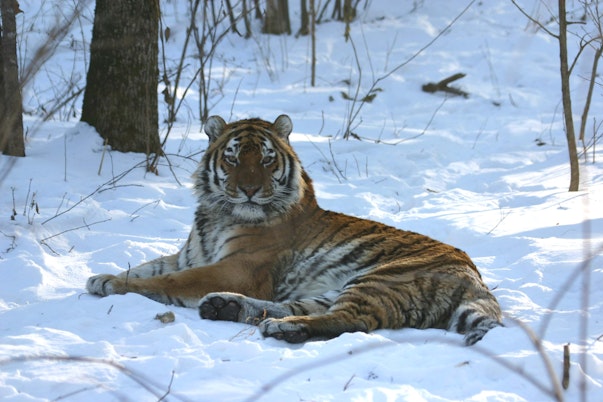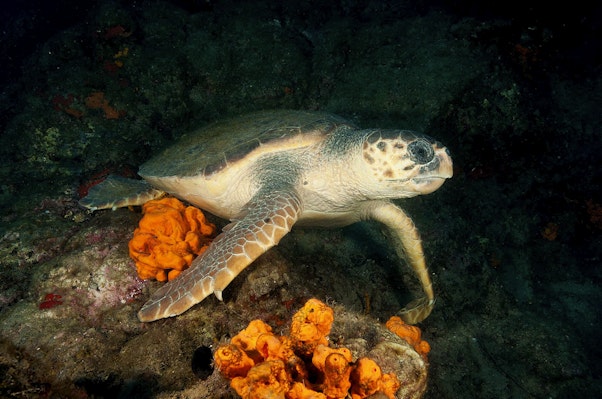
Amur tigers and leopards increase. Numbers have increased in the Russian Far East where Sergei Bereznuk (WA2006) works to protect these big cats and their prey from poachers. The total Amur tiger population is now 550 individuals, up from an estimated 428-502 tigers according to the 2005 census. Amur leopards now number about 70 individuals, up from 40 in 2007 thanks to this work.
……….
“Before the Flood”, Leonardo Di Caprio’s film developed to raise awareness of climate change, features 2016 Whitley Awardee Farwiza Farhan in her quest to protect the Leuser Ecosystem – the only place in the word where Sumatran orangutans, elephants, rhinos and tigers co-exist.
……….
After a 60 year absence the Griffon vulture is again part of the Balkan Mountain and Pirin ecosystems in Bulgaria. Emilian Stoynov (WA2007) reports the first Griffon vulture chicks for over half a century in southwest Bulgaria, with 11 fledged in 2016.
……….
The new Tost Nature Reserve was approved by the Mongolian Government following seven years work by Charu Mishra (Gold2005) and his team. This is the first state-level Protected Area declared specifically for snow leopards. The Tost Nature Reserve covers over 8,000km2 and will connect two existing National Parks, making it one of the world’s largest continuous protected snow leopard habitats.
……….

An eight fold increase of fish biomass with spill-over benefits for the fishery cooperative was reported in Eastern Turkey by Zafer Kizilkaya (WA2013) following three years of enforcement of the Non-Fishing Zone (NFZs). Two NFZs were also extended by another 600ha protecting extensive sea grass areas, shark breeding and feeding grounds whilst trawling and purse-seining were prohibited in Gokova Bay. Sightings of the Critically Endangered monk seal have increased since the species’ return to the Bay.
……….
For the first time, Cameroon’s Ebo Forest gorillas were caught on camera and the trailcam footage publicised in BBC Wildlife Magazine. A recent breakthrough for Ekwoge Abwe (WA2013)! The 2,000km2 Ebo Forest is one of the largest tracts of jungle left in the region. Its small population of western gorillas is thought to be a new subspecies and the footage could aid the mission to declare the forest a national park thereby protecting another 10 species of great apes and monkeys.
……….
Consumers to assist in sustainable fisheries! Joanna Alfaro Shigueto (WA2012) has successfully piloted the commercialisation of sustainable fishery products to consumers to reduce bycatch of key species. Working with local fishermen and vessel monitoring systems the project certifies fish as sustainably harvested and works with four world-class restaurants in Peru to publicise the choice of sustainable fish products in menus and for daily consumption. The next step is to scale-up so that more fishers reduce accidental by-catch of turtles, dolphins and sea birds.
……….

The Critically Endangered Helmeted hornbill received growing conservation attention in September when a strong resolution was adopted unanimously by all Parties to CITES, the convention on international trade in wild species. WFN through the Whitley-Segré Conservation Fund is now supporting Aparajita Datta (WA2013) and her partners to protect these iconic birds. Marine winners also reported success with four shark and nine ray species now protected under CITES regulations (Randall Arauz (Gold2004) and Rachel Graham (Gold2011)).
……….
The 2017 Tribeca Film Festival will raise global awareness of pink river dolphins. A film about Fernando Trujillo (WA2007) and his work called ‘Omacha Man’ exposes illegal gold mining in the Amazon basin and its harmful effects on wetland ecosystems and indigenous communities suffering mercury poisoning. Watch the teaser trailer.
……….
A new 100,000 hectare Marine Protected Area (MPA) was created around the Punta Tombo Magellanic penguin colony in Argentina to protect penguin feeding grounds. Home to 400,000 breeding pairs, it is the largest Magellanic penguin colony in the world, but numbers have declined by 20% in the last 20 years. Until now penguins were protected on land but not when they entered the water to feed. (Pablo Borboroglu Whitley (WA 2010)).
……….
A further 6,000ha of critical habitat has been protected in Papua New Guinea connecting existing Conservation Areas and bringing the current total to over 57,000ha to benefit species such as tree kangaroos and birds-of-paradise thanks to the work of Karua Kuna (WA2016).